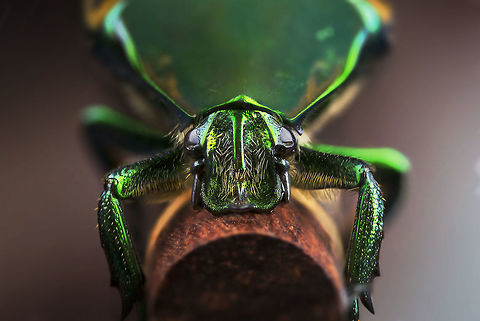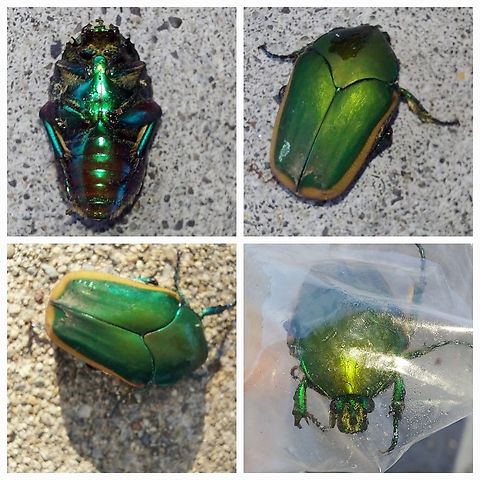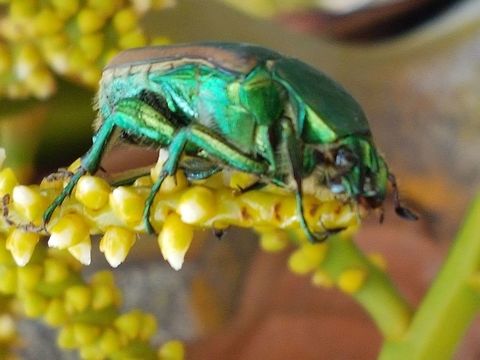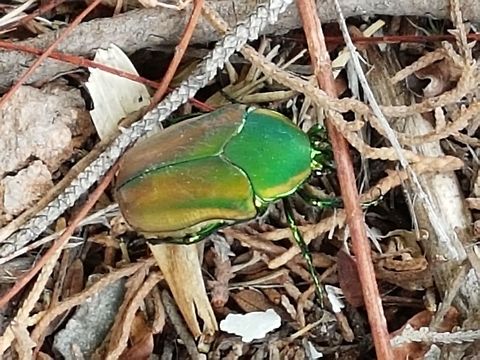
Appearance
Figeater beetle larvae, commonly called "crawly backs", roll on their backs and propel themselves upsidedown. Adult figeater beetles grow to approximately 1.25 inches. They are a semi-glossy green on the top and a brilliant iridescent green on the underside and legs. They are active during daylight hours, often congregating in the shade of trees near choice breeding grounds to find mates.
Naming
Figeater beetles are often mistaken for green June beetles and occasionally Japanese beetles, which occur in the eastern US.
Distribution
The figeater beetle is native to moister areas of the American southwest, where its natural diet includes fruit from cacti and sap from desert trees. Their range has expanded considerably since the 1960s with the increasing availability of home gardens, compost piles, and organic mulch.
Behavior
After mating, eggs are laid in decaying matter or compost piles, which provide sustenance for the emerging larvae. Figeater beetle larvae, commonly called "crawly backs", grow up to 2 in and are thick and white with a dark head. They have six small, ineffectual legs; to move, they roll onto their backs and propel themselves upside down, using the stiff dark hairs on their backs to gain traction. At rest, they curl into a firm "C" shape.Pupation occurs in the spring; adults emerge from July to September. Adult figeater beetles grow to approximately 1.25 inches. They are active during daylight hours, often congregating in the shade of trees near choice breeding grounds to find mates. They make a loud buzzing sound similar to that of carpenter bees, possibly because they do not need to open their elytra in order to fly, an ability shared with many other flower beetles.

Food
The adult's primary food has become fruit in gardens and orchards. They prefer sweet food, which includes the leaves, flowers, and saps of some plants and ripe or overripe fruit. Fruit with tough skins are too hard for them to bite through, so they most often eat softer-skinned fruit such as figs, peaches, grapes, pears, and tomatoes, among others. The beetles are particularly attracted to ripening and fermenting fruit, which emit gases that lead the beetles to them, and to fruit that other animals or insects have already damaged. In most small gardens, the adult beetles are minor pests that do little damage; however, they can swarm on soft or damaged fruit and have been known to eat an entire garden grape or fig crop. They are not considered to be an important pest because they do not damage lawns as larvae and trees as much as June beetles or Japanese beetles.References:
Some text fragments are auto parsed from Wikipedia.